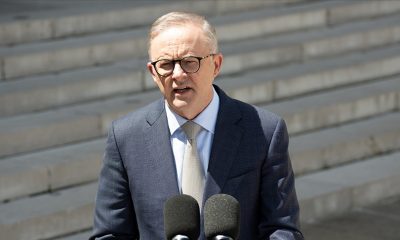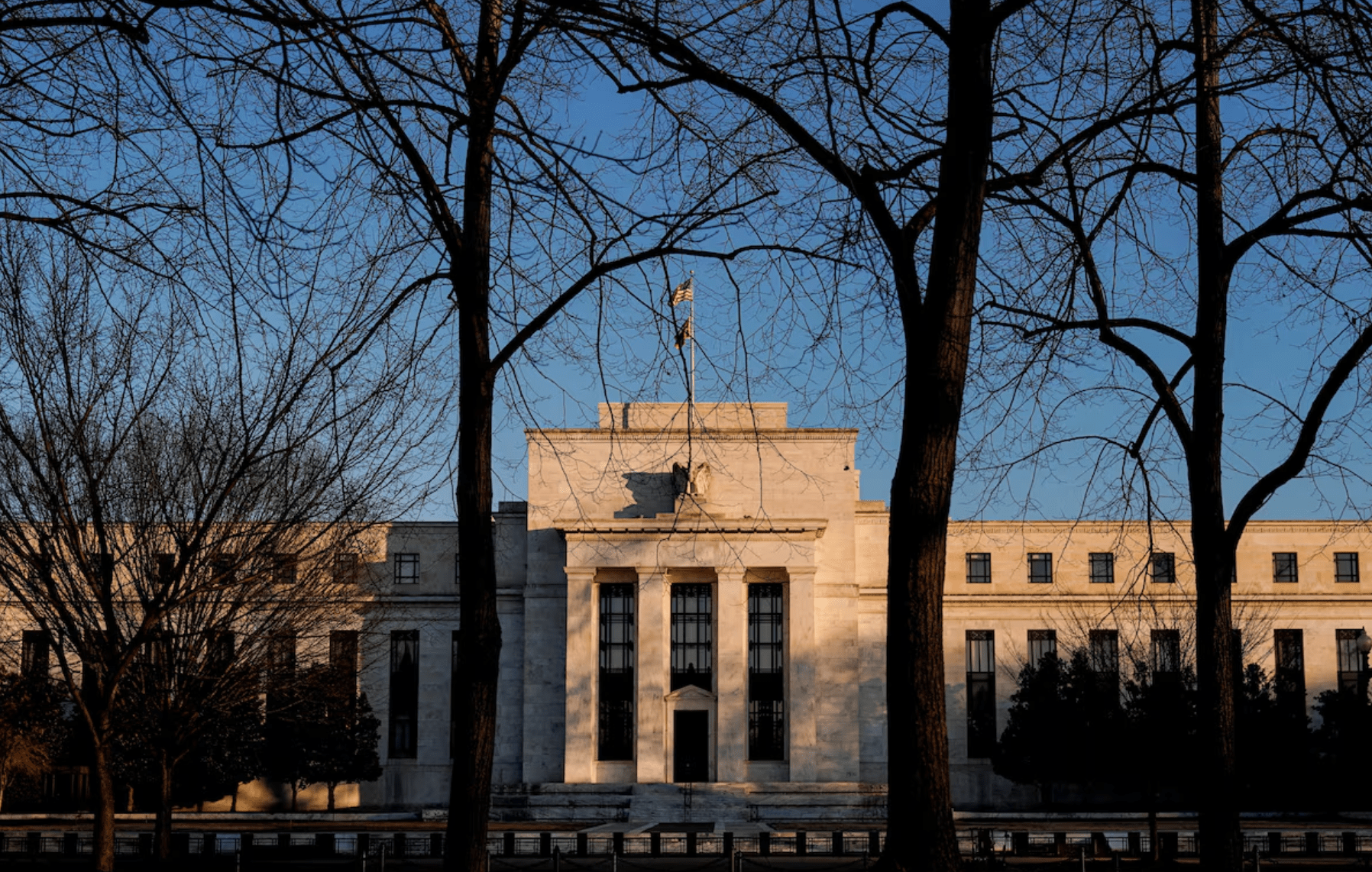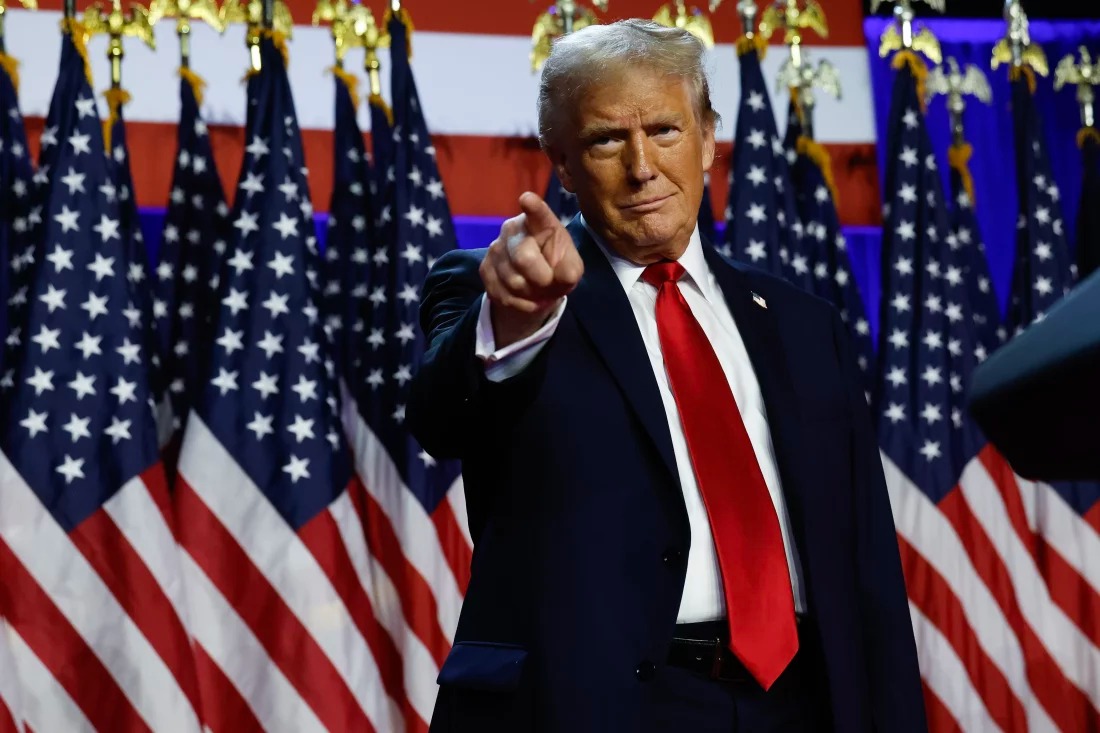US Treasury Secretary Janet Yellen first paid homage to a slave memorial in Senegal, then spoke to farmers in a remote village in Zambia, and eventually visited a job retraining facility in South Africa’s coal region on tour to convince the locals of the good intentions of her country.
“We’ve seen inflation come down substantially,” Yellen said about the American economy in South Africa, although “there can be hiccups” and she “wouldn’t predict month-to-month-type changes.”
Despite her belief that rental prices substantially contribute to inflation, Yellen expects that it would come out over the next five or six months, and this cooldown would deaccelerate the price rise. She also said that goods prices have actually been falling, but service prices are rising more rapidly.
Considering the 2.9 percent growth in the fourth quarter is “solid,” Yellen emphasized that slower growth is desirable in this high-inflation environment.
Interim balance sheet in inflation
The New York Fed has published a study that explores which income groups are more affected by inflation. The findings show that inflation had varying effects on different groups in 2021 and 2022.
Middle-income households are hit worst by inflation in 2021. Those with an annual earning between $50,000 and $150,000 are considered middle-incomed.
This income group was most suffered from the rocketed prices of used cars and motor fuel. The lower-income group is more likely to rely on public transportation, while the wealthy are more likely to purchase brand-new cars, and their spendings on gas constitute a much less portion of their income. These made middle-income households the main target of inflation. This outcome is partially attributable to differences in consumption patterns between the well-off and the poor, between peasants and urbanites.
Fuel and used car costs have fallen in recent months. Meanwhile, the rising rental and goods prices are hurting. Inflation now primarily affects the lower-income population since these two are among the necessary expenditures.
For this reason, the poorest 40 percent of the population bears an extra 0.3% inflation.
For example, rural residents experienced 2 percent higher inflation than the national average in the year leading up to February 2022. The same regions are now living below-average inflation.
In early 2022, black and Hispanic households experienced a 1 percent extra inflation rate than white households. As it turns out, the inflation for non-college-educated people is also more severe. These groups are shown to be getting closer to the average inflation rate.
Food and rental prices rise faster than the inflation average (10.6 percent, 7.9 percent, and 7.1 percent, respectively). Therefore, what Nobel Prize-winning economist Paul Krugman argued in New York Times last November, “inflation does not hurt the poor disproportionately,” is not true. Krugman bases his argument on the fact that the proportion of pay increases for low-income employees is higher than that for high-wage ones.
The poorest quarter of Americans spends more than half of their income on housing, food, and healthcare, according to statistics from the Bureau of Labor Statistics in the United States. The high-income group disposes of a far more significant percentage of their money to dining out, self-entertainment, vacation, and brand-new and used cars than the low-income group.
Prices of basic needs have risen more rapidly than non-essential goods, as the general and historical tendency suggests.
Decline in consumer spending
It is generally agreed that falling consumer spending is a significant contributor to the recent decline in the inflation rate.
According to statistics released last week, consumer demand fell in December by 0.2% compared to the previous month. This rate rises to 0.3% after adjusting for inflation.
Although December is the Christmas season, consumer demand fell by 1.1% from November, according to data on retail sales.
Perhaps one of the most important indicators of the decline in American consumption is the considerable drop in the trade deficit in November. This month’s greatest monthly loss in a 14-year period highlighted falling consumer demand and increased importing-associated financing costs.
The US trade deficit narrowed by 21% in November, falling to $61.5 billion. While overall imports dropped by 6.4%, imports of products decreased by 7.5%. In November, exports fell 2% as well.
While the dollar’s relative strength lowers the worldwide competitiveness of American manufactured products, the high-interest rate policy of the FED has an impact on reducing demand.
Another issue is that households whose savings seemed to grow thanks to the state’s monetary subsidies during the pandemic are being enticed back to levels in 2005.
Furthermore, consumer loaning is getting dangerously close to its limits. In the third quarter of 2022, payments for credit cards, vehicles, and student loans have peaked since 2008.
Manufacturing industry is alarming
More importantly, a possible “factory recession” in the manufacturing sector in the United States may be the direst of these developments.
A Wall Street Journal survey predicted a 0.1 percent decline in industrial output in December 2022 before the numbers were released. The official statistics revealed a shrinkage of 0.7%, failing all expectations.
Capacity utilization was anticipated at 79.6 percent. The numbers showed a decline, down 78.8 percent compared to November.
Manufacturing continued the downward slide. The manufacturing sector lost another 1.3% in December after shrinking by 1.1% in November.
The industry experienced a 1.8% drop in new orders in November.
The increase in capital expenditures (equipment, buildings, intellectual property) was a modest 0.7 percent. In the third quarter, these rates were 6.3%. Therefore, it stands to reason that investment has slowed down as well.
It is often believed that the manufacturing sector of the American economy is the most vulnerable to a recession. In Q2, a technical recession is likely to occur, but economists expect it to be ‘mild.’
Teeny-weeny recessions
The overall tendency of recent estimates for the American economy is the assumption of a modest recession.
The US economy will be cooled down by the FED’s decision to keep raising interest rates at a slower pace, increasing loaning costs and declining consumer demand.
However, even the “pessimistic” FED believed there was a light at the end of the tunnel. Almost everyone anticipates a quarter-point increase in interest rates at this week’s meeting. A ‘soft landing’ is possible for the American economy, FED Governor Christopher Waller noted in his ‘Cautious Optimism’ address.
In the Bloomberg survey, economists predicted GDP would begin to decline in the second quarter, albeit a modest drop.
On the other hand, the technical definition of a recession is a decline in economic activity that lasts for two consecutive quarters in many countries. However, as Bloomberg points out, this is not the situation in the United States. In private meetings, ‘elite’ scholars of the National Bureau of Economic Research (NBER), a “non-profit” institution, are responsible for making the “official” declaration of a recession in the United States. Their deliberations often take place for a full year. The common definition of a recession is that the consensus essentially drives Wall Street that a recession is being experienced.
Is the labor market ‘tight’?
All US officials and corporate economists agree that the labor market is ‘tight.’
Unemployment rates are at historic lows, while corporations continue hiring despite the massive layoffs at tech giants.
However, the dismissals by major corporations do not directly indicate that the economy is currently in recession. Since many businesses anticipate a slowdown in 2023, they may now be adopting preventative measures to reduce labor expenses.
As a matter of fact, the formerly ‘tight’ labor market began showing signs of relaxation in December. The ever-increasing new employment after the pandemic has started to cool down. Companies created two hundred thirty thousand new positions in December. Compared to the previous two years, this is the lowest increase.
New jobs opened in 2022 were 4.5 million, clearly lower than the 6.7 million expected in 2021.
The figures may seem optimistic, but more nuanced data is concealed beneath them. The labor force participation rate, which measures the percentage of adults in the United States who are either employed or actively seeking jobs, increased to 62.3% in December; nonetheless, this is still lower than the pre-pandemic levels.
In addition, the average weekly working hours have been falling in the last two years, and in December, it marked 34.3 hours.
Employment with temporary aid services has dropped by 110.000 in the previous five months. Coupled with the data shown above, it means that employers are abandoning temporary aid programs and cutting down on employee hours in response to falling demand from customers.
Wage growth slows down
Several experts, like American Center Vice President Lael Brainard, have pointed out that low-income workers have had less wage increases than high-income workers. It is evident that employees in non-administrative positions have witnessed a lesser salary gain.
However, we have already covered above that the basic expenses of low-wage workers are concentrated in a few key areas and that inflation in these areas is greater than in others. To all this, additional details, including: Prices increased by 14% from early 2021 to late 2022, but low-income employees saw a rise of just 11.5% in their average annual salary.
Similarly, the pace of salary increase has slowed. The average hourly pay in the United States rose 4.6% in December over the previous year. It should be emphasized that inflation in the same period was 7.1 percent.
Despite all this, it is worth noting that consumer optimism is rising in OECD countries. The industrial sector, which was projected to be impacted severely by the rise in energy costs, was spared from collapsing by the mild winter, especially in Europe. In the following article, our focus will be on Europe.

 EUROPE1 week ago
EUROPE1 week ago
 OPINION2 weeks ago
OPINION2 weeks ago
 OPINION1 week ago
OPINION1 week ago
 DIPLOMACY2 weeks ago
DIPLOMACY2 weeks ago
 OPINION2 weeks ago
OPINION2 weeks ago
 ASIA1 week ago
ASIA1 week ago
 MIDDLE EAST1 week ago
MIDDLE EAST1 week ago
 MIDDLE EAST2 weeks ago
MIDDLE EAST2 weeks ago





















